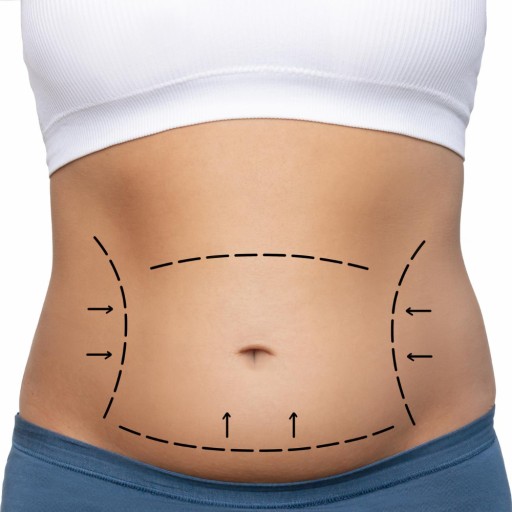Quote of Memorial
Abdominoplasty
Abdominoplasty is generally an ideal surgery for those who have experienced saggy and loose skin, along with weakened abdominal muscles, due to massive weight loss, pregnancy, and aging. By offering improvement over these features, abdominoplasty helps in providing a firmer and better-contoured abdominal profile.
Abdominoplasty is an effective solution for individuals with persistent abdominal bulges or excess skin that cannot be improved through diet and exercise alone. The surgical procedure not only makes one look better physically but also increases one's self-confidence and comfort. Knowing the advantages, risks, and recovery process will help in understanding abdominoplasty-this truly transformative surgery.
Benefits of Abdominoplasty
Abdominoplasty has several advantages for people who, after redevelopment, had excess skin and abdominal fat. The first and most important is the removal of loose, sagging skin because of pregnancy, weight loss, or aging processes, which firms the weakened abdominal muscles into a smoother and firmer abdominal contour.
It is also used to enhance other body functions. For instance, most of the patients find that their posture improves with the relief from back pains due to the abdominal muscles that are strengthened. Skin irritation and rashes are also alleviated from the folds of the skin that sag.
The Abdominoplasty Procedure
Major steps in abdominoplasty usually follow a general pattern. This includes consultation with a qualified plastic surgeon to review the aims of the patient, relevant previous medical history, and the most appropriate surgical method of choice. An incision is made transversely across the lower abdominal wall in this surgery to enable the surgeon to remove surplus skin and fat. Next, muscles under the abdomen are pulled tight, and the remaining skin is pulled tight and stitched into place.
It generally takes about 2 to 4 hours depending on the nature and area of surgery that the patient needs. Very often, a temporary tube is established for drainage to drain out the excess fluid, which reduces swelling. After surgery, it is necessary for all patients to get post-operative care instructions for their effective recovery.
Who Is the Right Candidate for Abdominoplasty?
Abdominoplasty is ideal for an individual with generally good overall health and one who has realistic expectations from the surgery. These candidates usually include individuals who have gone through a serious weight loss, women after childbearing, or individuals with relentless abdominal skin and fat despite healthy and regular walking routines.
Other requisites are that the candidates should not smoke or be willing to stop smoking as this interferes with the process of healing, causing complications. Consultation from a board certified plastic surgeon will rule out whether the abdominoplasty is suitable for the required needs considering health conditions.
Post-Operative Care and Recovery
Care after surgery is a step not to be missed in abdominoplasty recovery. After surgery, patients have to follow the surgeon's instructions regarding wound care and medication, limitation of activity. A compression garment is worn to support the healing process and minimize swelling.
Downtime may vary, but most patients will be quite comfortable performing light activities within 2 to 4 weeks. Full recovery may take months as the final appearance of the surgery will only appear after the body has completely adapted and healed. Patient follow-up appointments with the surgeon are necessary on a regular basis to monitor the patient and resolve any issues that may arise.
Risk and Considerations
As with all forms of surgery, abdominoplasty carries some risks and possible complications. Common ones include an infection, excessive bleeding, and an adverse reaction to anesthesia. Possible complications peculiar to abdominoplasty are seroma formation, that is, a collection of fluid, hematoma, or finally delayed healing of the wound.
Discussion of all possible risks and benefits with your surgeon will permit one to make a truly informed decision and adequately prepare for a successful outcome. Following instructions on pre- and post-operative care will also contribute to a smoother recovery.
- Arm Lift (Brachioplasty)
- Back Liposuction
- Blepharoplasty (Eyelid Surgery)
- Brazilian Butt Lift (BBL)
- Breast Augmentation
- Breast Augmentation with Tear Drop Implants
- Breast Correction
- Breast Lift
- Breast Reconstruction
- Breast Reduction
- Brow Lift
- Buccal Fat Extraction
- Butt Implants
- Buttock lift
- Buttock Reduction
- Cheekbone Reduction
- Chin Implant
- Chin Liposuction
- Combined Aesthetics
- Cosmetic Dermatology
- Health Insurance
-
Accommodation
- Online Healthy Life Assistant 9/5
- Post - Experience Follow Up 6 Month
-
Extra Privileges
- Transfer

- Health Insurance
-
Accommodation
- Online Healthy Life Assistant 24/7
- Post - Experience Follow Up 1 Year
- Pre-Treatment Doctor Consultation
-
Extra Privileges
- Transfer

 Private
Private
- Health Insurance
-
Accommodation
- Healthy Life Butler
- Post - Experience Follow Up 2 Year
- World-Famous Doctor Consultation
-
Extra Privileges

* Price varies depending on extra and upgrade selections.
Ideal candidates for abdominal liposuction are individuals with localized fat deposits in the abdominal area that are resistant to diet and exercise. Good candidates generally have relatively firm skin and are in good overall health.
The procedure typically involves making small incisions in the targeted area, through which a thin tube (cannula) is inserted. The fat is then loosened and suctioned out through the tube, contouring the abdominal area.
Recovery time varies, but most patients can return to normal activities within a week or two. Patients are usually required to wear compression garments to support the healing process.
Abdominal liposuction primarily targets excess fat rather than loose skin. In some cases, it may result in mild skin tightening due to the removal of fat, but if there is significant skin laxity, additional procedures like a tummy tuck may be recommended.
The fat cells removed during liposuction are generally gone for good. However, maintaining a healthy lifestyle with proper diet and exercise is crucial to prevent new fat accumulation.




